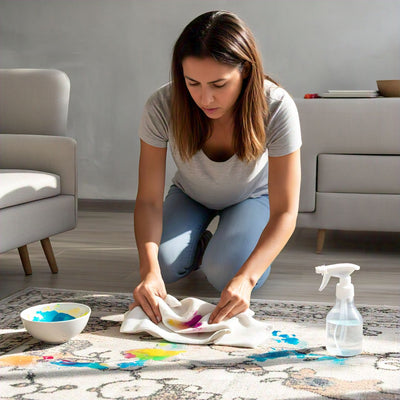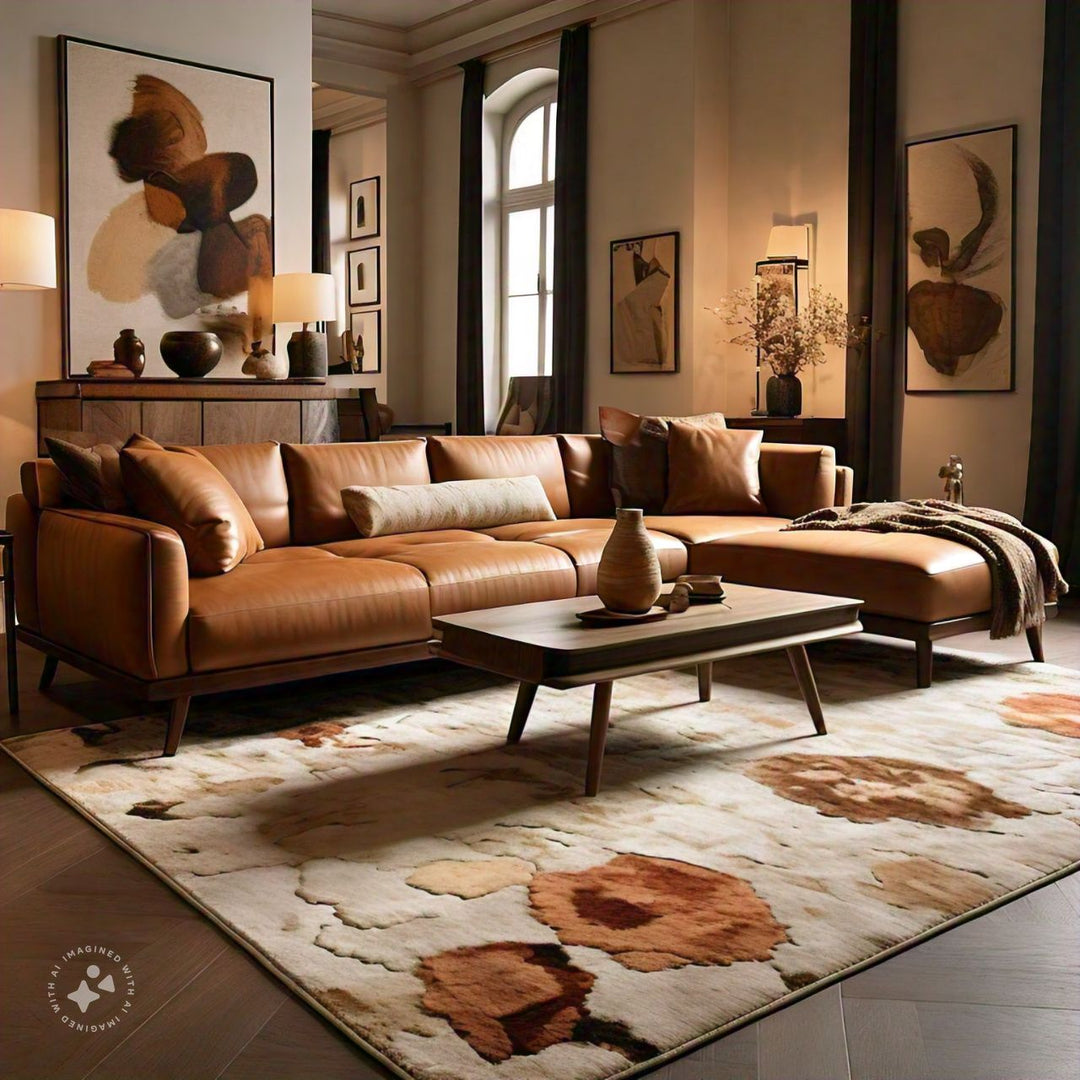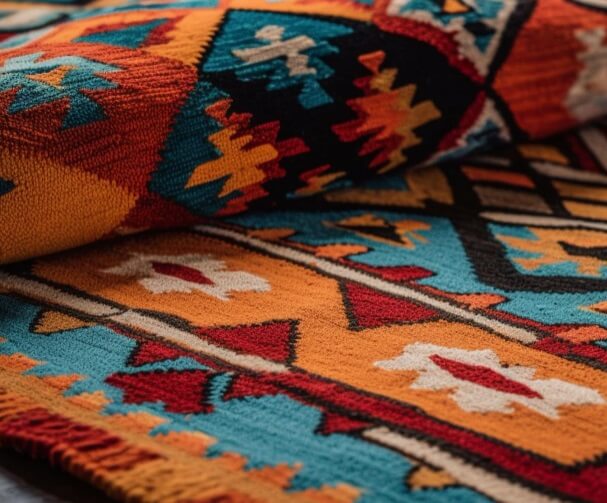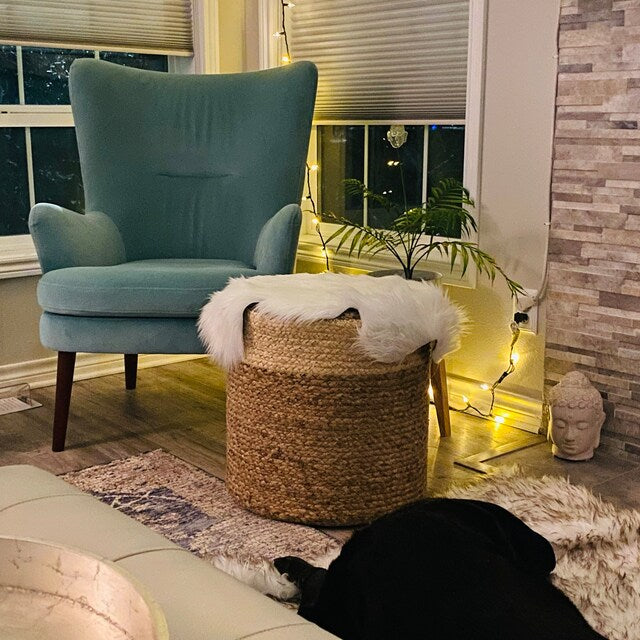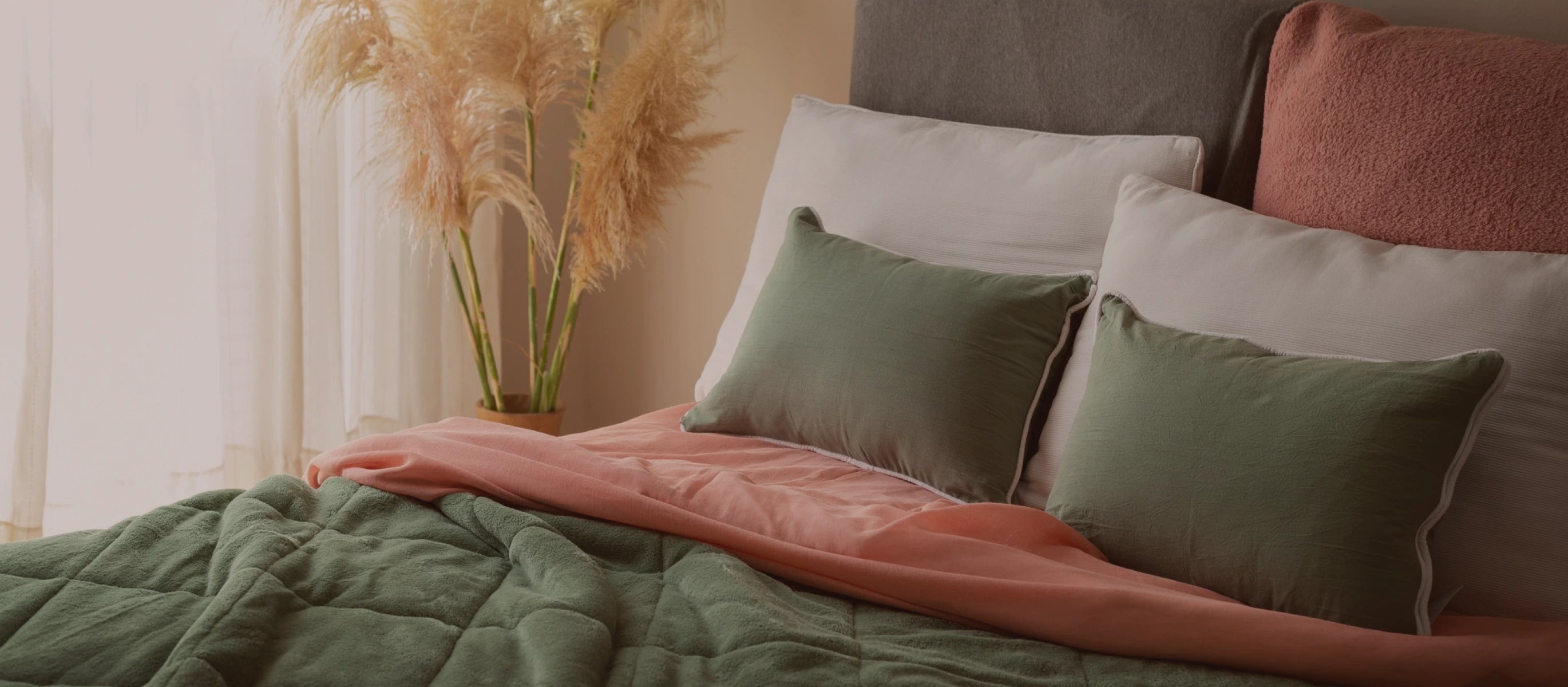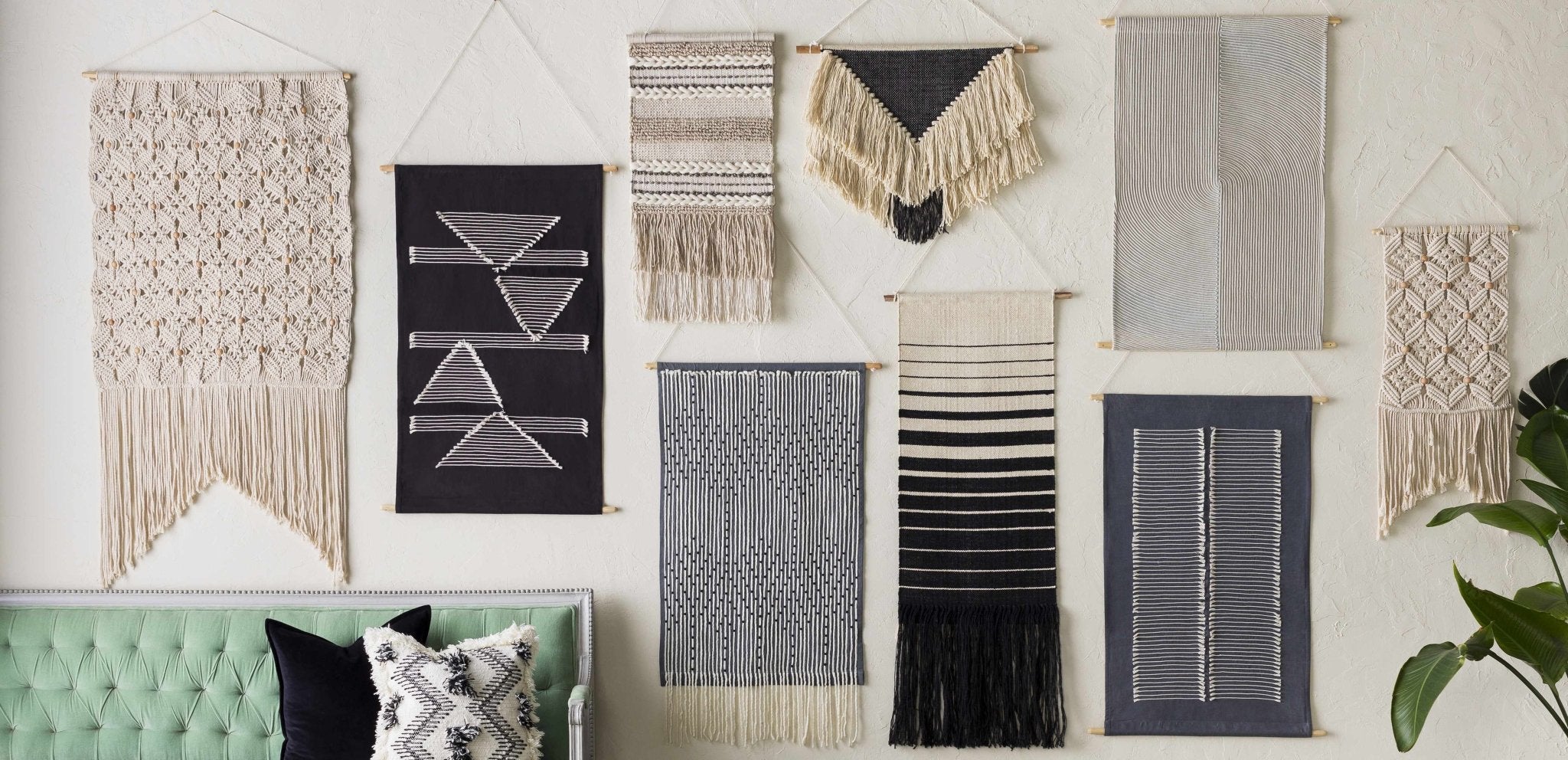What is a Hand-knotted Rug & How to Tell if it is Hand Knotted?
What are Hand-knotted rugs?
There is something special and unique about a hand-knotted rug. Traditional hand-knotted rugs are known for their magnificent beauty, enduring durability, and product of fine craftsmanship technique. These rugs are true paragon that can last for generations and is sure to become a cherished family heirloom.
Hand-knotted rugs are made using the traditional hand-knotting technique on a specially designed loom. Making hand-knotted rugs is an ancient method that originated in Central Asia, dating back to the 4th century B.C. The majority of the traditional rug is made using this weaving technique and some popular types of hand-knotted rugs are Oriental rugs, Persian rugs, and Kashmir rugs.
The creation of hand-knotted rugs is a labor-intensive process that requires craftsman skill. Its unique weaving technique involves inserting thousands of knots and is individually tied to a base or rug foundation. These knots make up the pile of the rug, and the weaving process is typically done from the bottom going up.
How do You Know if a Rug is Hand-knotted?
- Back of the rug: hand-knotted rugs have the same design on the front and back of the rug the difference is that one side is plush and soft and the back is hard with an intrinsically woven design whereas a hand-tufted rug has latex coating and no design at its back. If the rug has a backing material, then it isn't an authentic traditional hand-knotted rug.
- Symmetry of the design. To determine if a rug is a genuine hand-knotted rug, simply turn it upside down and closely examine the pile at the back of the rug. A true hand-knotted rug is characterized by a distinct back and front in which the front is plush, while the back reflects the same pattern and design seen in the front. The design at the back of the rug must be symmetrical to the one in front. The more detailed the design is at the back of the rug, the better it's quality.
- Knots of the rug. Hand-knotted rugs also show slightly uneven knots as it is made by hand, while for machine-made rugs, the look is more perfectly uniform and even. The knots of a traditional hand-knotted rug is extremely tight and are visibly tied together closely, but for machine-made rugs, the knots are just makeshift knots, wherein the fibers are just made to appear that way, but in reality, they are just attached to the rug's foundation material using high pressure and heat.
- Fringes of the rug. The rug's fringes are also good indicators of the technique used in creating the rug. Machine-made rugs often have fringes that are sewn at the back of the rug and added as a finishing touch, but for authentic hand-knotted rugs, the fringes are an extension of the rug foundation and appear to be integrated into the whole design, rather than some decorative embellishment. Also, for traditional hand-knotted rugs, each knot is tied to a warp thread, thus the fringes are formed naturally.
-
Quality of the rug. The quality of a rug depends on several factors such as the knots per square inch, the quality of material or yarn, and the type of dye used in the production process. A significant determinant of quality for rugs is the knot density. The knot density pertains to the number of knots per square inch in a rug.
-
The Material of the Rug. Handmade rugs are often made from natural materials like wool, silk, or cotton. These materials offer a distinctive feel and quality that synthetic fibers in machine-made rugs often lack. The natural fibers used in handmade rugs also tend to be more durable and age beautifully over time.
- Look for Variations in Color. Handmade rugs often have slight color variations. This is due to the use of natural dyes and the hand-dyeing process, which can result in subtle shifts in color. These variations add to the rug's charm and uniqueness, setting it apart from the uniform color of machine-made rugs.
Types of Hand Knotted Rugs
Hand-knotted rugs are highly expensive all around the world because it's durable, very finely weaved with good quality wool or silk, and demand skilled craftsman for completing a single piece of rug which requires ample amount of time for its completion.
A consumer who owns hand-knotted rugs shows their classiness and love for artistic handmade things and also once bought is adored for generations.
- Persian weave: The real Persian rugs come from their original place, Iran. Persian hand-knotted rugs are also made in many south-eastern Asian countries and are best known as Oriental area rugs.

- Nepali weave: Nepali rugs made in India and Nepal is also known as Indo-Tibetan rugs or Indo-Nepali rugs. They use different weaving patterns and use steel rod ‘sariya’.
- Turkish Weave: Hand-knotted Turkish rugs are known for their different method of tying the knot around the cotton string.
The common types of hand-knotted rugs are:
Knotting Techniques
There are three types of knotting techniques that are
- Senneh or Persian knots
- Ghiordes or Turkish knot
- Jufti knots
The Persian knot and Turkish knots are used most preferably by craftsmen. There is a third type of knot, called the Jufti knot but this technique is considered substandard and is not so commonly used, at least not in the better quality rugs.
1. Senneh or Persian knots: Senneh knot is also known as the Persian knot. they are mainly used in countries like
- Iran
- Pakistan
- Afghanistan
- India
- Central Asia.
This knot is also known as a double knot. Persian knots are asymmetrical in their formation. For very fine detailing in rugs, these asymmetrical knots are used.

- Turkish knots: Turkish knots are symmetrical or single shot. It is used by Anatolian and Caucasian weaving groups in turkey and also used by other Turkish and Kurdish tribes in Iran. To make the Turkish knot, the yarn is wrapped across two adjoining warp strands and it is then pulled back through the inside of both warps and drawn through the center so that both ends emerge from between the same warps. This process produces a very secure pile construction. This knot gives a very secure and durable pile establishment.

- Jufti knot: This type of knot is the least popular and is mostly used in the Khorassan region of Iran. The Jufti knots take lesser time compared to other knot types as they are not very dense and do not result in fine weaving hence, are not strong, durable, and inexpensive. This knot is used for making rugs for common use that is not expensive which is why it is not considered a superior quality rug. The knot is not very dense and takes comparatively less time than the other knot types.

How to calculate knots per square inch (KPSI)?
A knot per square inch (KPSI) is an assessment of the density of knots in a hand-knotted rug which indicates its quality and durability. So this measurement is just one aspect to take into account when assessing a rug.
To calculate a hand-knotted rug one can flip the rug and measure it by using an inch scale vertically for 1’’ and horizontally 1’’ and multiplying both figures can get KPSI.
The knots in hand-knotted rugs can be compared to a pixel, the higher the pixel clearer will be the image likewise to knots in a hand-knotted rug.
As the density of the knots compressed into a square inch increases, the clarity and elaborateness of the design in a hand-knotted rug also increase. This is the reason why hand-knotted rugs are highly durable and move on to generations as knots are closely packed.
Weft and Warp
Warp, refers to the thread alongside the woven fabric that is attached to the loom. The length of the thread decides partly which kind of loom is to be used and the conditions of the warp one may have.
A weft is a thread that is put between each row of knots in a carpet. When manufacturing hand-knotted carpets this thread often consists of cotton and wool, but other materials occur.
Learn about all rug terms on The Rug Decor's glossary page.
FAQs
Is My Rug Handmade?
To determine if your rug is handmade, check for uniform knots, natural materials, and an underside that mirrors the top pattern. Also, look for fringes that are part of the rug’s foundation rather than sewn on. These characteristics indicate a handmade rug.
Are the Fringes Sewn On?
In handmade rugs, the fringe is typically an integral part of the rug’s foundation. If the fringe appears sewn on, it’s likely a machine-made rug. Handmade rugs have fringes that are woven into the structure of the rug.
Can Persian Rugs Be Machine Made?
Yes, Persian-style rugs can be machine-made. However, traditional Persian rugs are hand-knotted and are valued for their craftsmanship and quality. Machine-made Persian rugs, while more affordable, do not have the same level of artistry and durability.
How Long Do Machine-Made Rugs Last?
Machine-made rugs can last anywhere from 5 to 20 years, depending on the quality of materials and construction. They are generally less durable than handmade rugs, which can last for generations with proper care.

